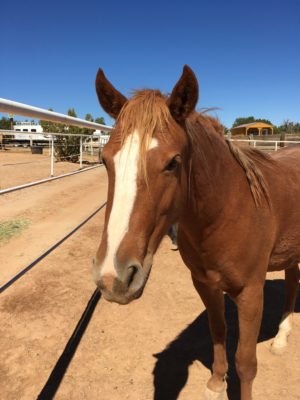
19 Jan 2021 Rehabilitating a neglected horse require critical care
With the numbers of neglected, abandoned, or mistreated horses steadily rising and cresting at 100,000 annually, even healthy equines without disability or behavioral problems may end up on the ‘unwanted list. Those fortunate enough to be shielded from future harm present a host of challenges for emergency facilities.
Signs of neglect
Open or untended wounds and cracked and curling hooves indeed indicate some form of neglect, but evidence of sustained hunger in a horse is hard to deny. In cases of a severely malnourished or starving horse, its skeletal ribs or hip bones protrude unnaturally. Listless ears and a nearly motionless frame tell a devastating story of a horse’s efforts to conserve any energy left in its emaciated body.
The process of starvation in a horse mirrors that of humans suffering from anorexia or cancer. Suppose the body fails to ingest sufficient nutrients for brain performance and organ function. In that case, it consumes stores of fat and carbohydrates to supply the energy needed to maintain its internal systems. A regularly fed horse replaces these nutrients from food. A starved body, once fat and carbohydrate stores wane to nothing, raids its tissues for protein – the only other source available for its survival.
Protein is a component of every tissue in the body, though no stockpiles exist unlike fat and carbohydrates. Consequently, a starving horse attacks any source of protein available, including vital organs such as the heart and its compromised gastrointestinal system. In essence, a starving horse turns on its own body and consumes itself to survive.
Critical first ten days
Providing food to an impoverished animal is an instinct for many, but transitioning a horse from the starved stage to one of health is often mired by the best intentions.
Refeeding syndrome develops when a horse is given concentrated calories too quickly, first disrupting the metabolic system before leading to heart, respiratory, or kidney failure. Researchers at the University of California – Davis designed a nutritional program to minimize the effects of refeeding syndrome, focusing on slowly stabilizing a horse’s weight.
In line with the program recommended by UC-Davis, a nutritional regimen should begin by feeding affected horses frequently, small amounts of high-quality alfalfa to reintroduce the protein and electrolytes necessary for normal metabolism. An emaciated shelter horse receives one pound or a 1/6 of a flake of hay every four hours for the first three days. During days four through seven, the amount of grass given at each feeding inversely shifts with daily feedings. Ideally, by day six, a horse consumes four pounds of hay every eight hours. By increasing the amount of grass given per feeding and reducing the number of times a day horse is fed, its systems can recover safely. Ready and continual access to clean and fresh water throughout the program is a must.
Evidence of recovery
After months and even years of neglect, horses often begin to rebound within the first two weeks of responsible care. Dynamic ear movement, a softness or curiosity in their eyes, and standard carriage of the head and neck appear as the first noticeable improvements. Weight gain comes more slowly, but within three to five months of rehabilitation, a horse can reach its average body weight.
The body condition score, a numerical method for assessing a horse’s degree of body fat, provides a consistent measure of an animal’s physical wellbeing. Scores range from one, indicating a starved or emaciated animal, to nine, evidence of an overweight horse. A score of three shows a nutritionally deficient horse, too, while a score of five or six is optimal for health.
An entire community of care
Finding an appropriate forever home for shelter horses requires not only proper nutritional and veterinary care. Basic training on the ground and in the saddle complements these efforts. The more training we have on our horses, the more adaptable they are.
The two primary reasons behind horse neglect or starvation reside in a lack of economic resources and a deficit of knowledge about animals’ needs. Yet, financial hardship and an impoverished mind cannot serve as an excuse for a horse’s neglect and starvation. Shelters can only do so much to guard against poor treatment, let alone bring a rescue back to health. In a nutshell, it takes an entire community behind a rescue to make it successful.
The Featured Image is Belle, a five-year-old mare available for adoption from The Horse Shelter, Santa Fe, New Mexico.

